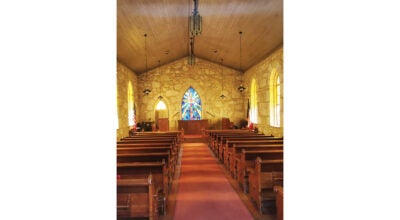Death accounts differ at trial
Published 6:00 am Friday, February 20, 2009
HATTIESBURG – The only two living witnesses to the 2006 death ofJewell Duane Douglas took the stand in Hattiesburg Thursday andoffered vastly different accounts of events.
The prosecution’s star witness Mark Culbertson, who pleadedguilty last year to manslaughter in Douglas’ death, told about abrutal beating murder on Oct. 11, 2006.
As Douglas ran from accused murderer Michael Leggett, Culbertsonsaid he grabbed a tire tool from the back of the car and pitched itat the fleeing victim. He said at that point Leggett went down ontop of Douglas and beat him to death from behind with theinstrument.
“I should have never went with Mike,” Culbertson said.”Everything that happened that night shouldn’t have happened.”
Leggett, 33, is facing his second trial on the murder charge. Hewas convicted by a Lincoln County jury last February.
However, the conviction was thrown out and a new trial grantedafter Judge Mike Taylor determined that prosecutorial misconductoccurred in the first trial.
The misconduct involved an alleged deal prosecutors made withCulbertson. Prosecutors have denied there was any suchagreement.
On Thursday, defense attorneys Joe Fernald and Jason Tateattacked Culbertson’s testimony by asking him the same questionsmultiple times and pointing at semantic differences in histestimony now versus his testimony in the first trial.
Fernald also pointed out that when Leggett told Culbertson, “Gethim,” he could have tackled him instead of throwing a tire tool athim.
“I could have done a lot of things different, I guess,”Culbertson said.
Fernald drew a contrast between Culbertson’s previous statementsto authorities and during the first trial and those made duringThursday’s testimony. He dwelt on the fact that Culbertson had saidhe’d seen Leggett “go down” with Douglas, and “saw his arm movingup and down,” but at some points he had also said, “I don’t knowwhat he was doing.”
Fernald continued to ask Culbertson about several statements hehad made to authorities, pointing out that over time everystatement became more detailed than the last.
But Culbertson held firm that he saw Leggett on top of Douglasand saw the up and down motion of his arm. And then when Leggettgot back up, he had the tire tool Culbertson had thrown in hishands.
Assistant District Attorney Diane Jones asked Culbertson why hehad agreed to testify against Leggett again, even though he hadnothing to gain.
“Because it’s the right thing to do,” he said.
Later, during the defense’s portion of the trial, Leggetttestified that he and Culbertson went to Douglas’ home to settle anargument and pick up some clothes and the wallet he had previouslytold people Douglas had stolen. He said he went inside the home totalk to Douglas about the situation while Culbertson waitedoutside, and Douglas went to his truck to retrieve the wallet,Culbertson attacked him by throwing “an object” at his head.
Before those events, Leggett testified that Douglas had calledhis employer to report his driving a company truck whileintoxicated, which had led to his firing. Assistant DistrictAttorney Brendon Adams asked Leggett, among other things designedto highlight inconsistencies in his testimonies, if he had beentold to move out of the trailer Douglas had been letting him stayin.
Leggett denied that assertion. However, in last year’s trial,Leggett testified that Douglas had said he would need to move, andthat he would come back the next day to pick up his things.
From there the prosecution attacked Leggett’s credibility,pointing out that Leggett and Douglas, who were known to “bicker,”had never come to physical blows before.
Adams asked Leggett why he had armed himself with three kitchenknives before going to see Douglas if he didn’t expect things tobecome violent. Leggett said it was just because he was “beingstupid.”
Finally, Adams asked him why he would leave his “friend” on theground bleeding from the head, and not call anyone or tell any ofthe officers he encountered in the ensuing events. Leggett said heassumed emergency workers were en route to the scene, and that hehad only fled the scene “out of self-preservation.”
Once Leggett left the stand, the defense called Dr. JamesLauridson on the stand to note what he perceived as deficiencies inthe testimony of former state medical examiner Dr. Steven Hayne. Hetold the jury that Douglas’ injuries were very much consistent withbeing hit in the head with a blunt object and then pitching forwardto the ground.
“The tire tool could have hit horizontally, causing Mr. Douglasto lose motor function and fall face-first to the ground,” hesaid.
Lauridson was scheduled to face cross-examination by prosecutorFriday.
After that, both sides will make closing arguments and the casewill be sent to jury. During Leggett’s last trial, the juryreturned a guilty verdict in just under two hours.





